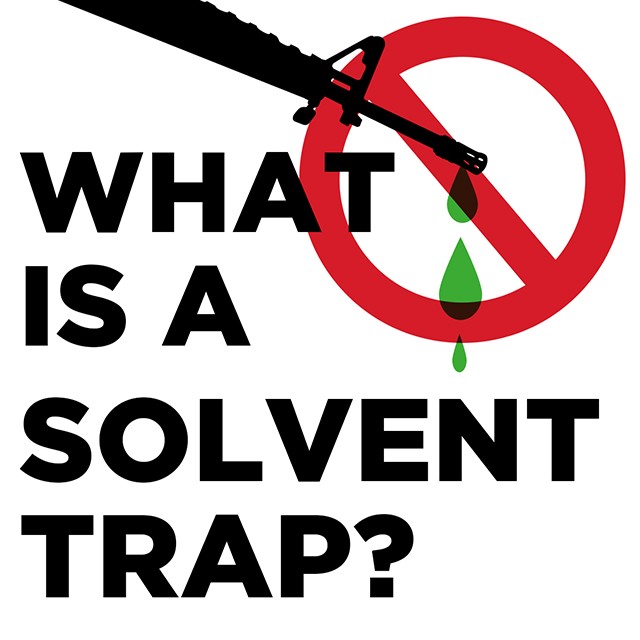
A solvent trap is a firearm cleaning system that is designed to capture cleaning solvent in order to be disposed of efficiently. Solvent traps feature cups, also referred to as dividers, that trap byproduct created during the cleaning process. Not to sound all National Geographic on you, but in their original environment, solvent traps might look familiar. They have a distinct resemblance to silencers. The big difference is that solvent traps do not have a hole bored through the center and they do not have a serial number engraved on them. They are also not always designed to be shot.
These three differences are small enough that people have been known to convert their solvent traps into suppressors, but they’re big enough that if you don’t have an approved Form 1 prior to these adjustments, it’s a felony. Emphasis on felony.
Converting a Solvent Trap to a Suppressor.
If you are reading this, then you might already know that some people convert their solvent traps into a DIY suppressor. Building your own suppressor is permissible so long as you have an approved Form 1 prior to making the needed changes. The ATF Form 1 submission process includes a $200 Tax Stamp and a Form 1 submission. Conveniently, the ATF does have an electronic submission portal where you can do everything, except for fingerprint card submissions, online.
How To DIY
Now, we might have just blown your mind. Some people don’t even know this is an option, and now you might have a ton more questions zooming through your head - specifically, how do you convert a solvent trap into a suppressor?
You might’ve heard us mention this before, but if you haven’t, your first order of business is to file your Form 1 with ATF and receive an approved Form 1 back. This approved ATF Form gives you the green light to permanently modify your solvent trap into a silencer by boring a hole and engraving a serial number on it.
Follow ATF Guidelines
Serializing: The ATF National Firearms Act Handbook has specific guidelines for depth, character use, and conspicuousness for engraving. Because of the ATF’s thorough engraving criteria, we recommend seeking out a professional firearm engraver. Be sure to bring your approved Form 1 with you so that the professional engraver can have the exact serial number ATF approved.
Drilling holes: There’s no skirting around the fact that boring a hole in a solvent trap to convert it to a suppressor requires the utmost precision and accuracy. You can either seek professional assistance or you can do-it-yourself. Depending on the solvent trap kit you purchase, some come with materials that assist in drilling through the solvent trap’s true center.
We can’t emphasize the importance of each of these steps enough. It’s exciting and intriguing to have the opportunity to build your own silencer, especially with the guidance of a solvent trap kit, but following federal, state and local laws and regulations is imperative.
DISCLAIMER
This blog post is not legal advice. The information provided is for educational purposes only. Legal advice may only be provided by a properly licensed attorney. We strongly recommend you consult a lawyer.
Additional Resources:





